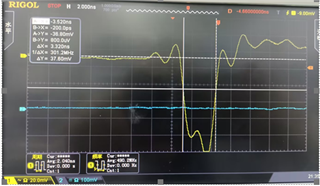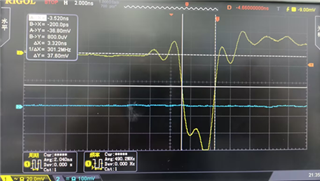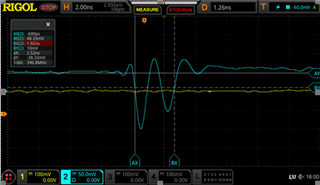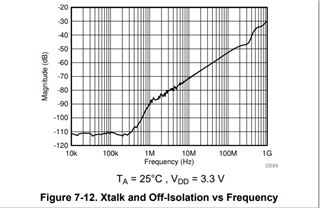Other Parts Discussed in Thread: TMUX1574, SN3257-Q1
Hello expert,
- May i ask for the S-parameter model of TMUX1309?
- Do you have the specific test waveform for TMUX1309? The transient response waveform is preferred.
- Input S1A, rising edge 0.7ns, falling edge 20ns, height ~100mV signals. Other channels do not input signals.
The strobe strobes to S2A can be tested for the following signals.
You can see the crosstalk is very obvious. When the signal is large, it is shown in the figure below. There are two peaks. May I ask why there are two peaks?
- When the signal at the input S1A is reduced, the crosstalk amplitude is reduced and the waveform changes to the following waveform. the two summits converge.

Best regards,
wenting



